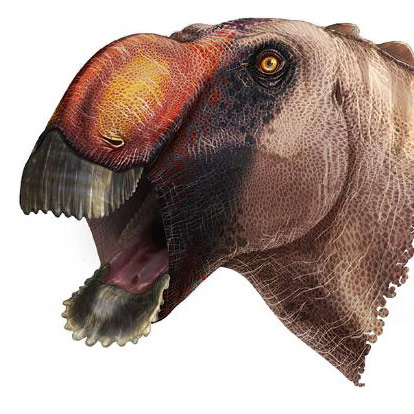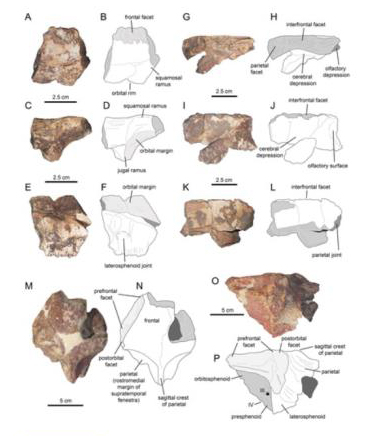The Etymology of Aquilarhinus and Mystery Fossil Material
How Did Aquilarhinus Get its Name? Mystery Fossils from Rattlesnake Mountain
Recently, team members at Everything Dinosaur wrote a blog article announcing the discovery of a primitive, “shovel-billed” hadrosaurid from the Big Bend National Park in south-western Texas. We received an email asking us how this dinosaur got its name, here is a quick explanation of the etymology.
Aquilarhinus palimentus – What’s in a Name?

Picture credit: ICRA Art
Aquilarhinus palimentus
The genus name is derived from the Latin “aquila” which means eagle and the from the Greek “rhinos” meaning nose. The combination of these two words – “eagle nose” describes the shape of the rostrum of this newly described dinosaur. It had a bony crest on its snout.
The species or trivial epithet is derived from a combination of Latin words – “pala” meaning shovel and “mentus” which is translated as chin. The species name has therefore been erected to describe the assumed front portion of the lower jaw (predentary), that resembled a shovel. It is thought that this broad-skulled, shovel-mouthed dinosaur fed by scooping up marsh plants.
Could the Scientists Have Found Another Hadrosaurid in the Big Bend National Park?
In addition to the fossil material found and ascribed to Aquilarhinus palimentus, researchers have also found additional fossils which are from a hadrosaurid, but they remain unsure whether these fragments of bone from the skull represent A. palimentus or another type of duck-billed dinosaur.
All the fossils ascribed to Aquilarhinus palimentus were found within four square metres, but these other bones were found just a short distance from the Aquilarhinus remains. The researchers writing in the “Journal of Systematic Palaeontology”, state that this material might pertain to A. palimentus but none of these isolated bones exhibit diagnostic features that would allow for certain attribution. For this reason, the research team describes this material separately and refrain from referring it to as A. palimentus, instead it is regarded as Hadrosauridae incertae sedis. The term “incertae sedis” is from the Latin, it means “uncertain placement”, the palaeontologists are unsure which type of dinosaur the fossils represent.
Hadrosaurid Skull Elements from Rattlesnake Mountain (Big Bend National Park)

Picture credit: Journal of Systematic Palaeontology
To read our previous blog post about the discovery of Aquilarhinus palimentus: An Unusual Shovel-billed Hadrosaurid.
Everything Dinosaur acknowledges the assistance of a media release from Texas Tech University in the compilation of this article.
The Everything Dinosaur website: Everything Dinosaur’s Website.

